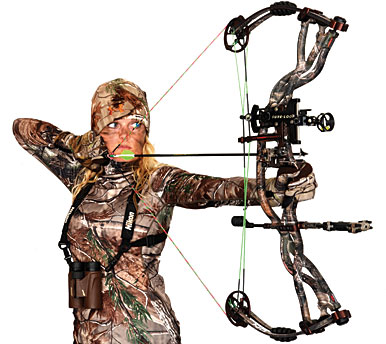Smooth Shots Ahead: Enhance Performance with Compound Bow Stabilizers
Smooth Shots Ahead: Enhance Performance with Compound Bow Stabilizers
Blog Article
Maximizing Your Archery Efficiency With the Right Compound Bow Stabilizer: an Extensive Summary
In the realm of archery, consistency and accuracy are paramount to accomplishing ideal efficiency. One vital yet often-overlooked part in boosting accuracy is the substance bow stabilizer. This simple device plays a substantial duty in steadying your goal, lowering bow torque, and absorbing vibrations. Nonetheless, the performance of a stabilizer pivots on various variables, consisting of weight, placement, and style. By recognizing the nuances of choose and enhancing a compound bow stabilizer, archers can adjust their equipment to raise their capturing experience to brand-new levels of efficiency and control.
Significance of Bow Stabilizers in Archery

Additionally, bow stabilizers aid in balancing the weight circulation of the bow, which can enhance the archer's stability while firing and intending. By including weight to the front of the bow, stabilizers can minimize the quantity of torque experienced upon release, resulting in a smoother and extra regulated shot - compound bow stabilizer. This weight distribution additionally aids in holding the bow stable for a longer duration, permitting the archer to intend much more precisely
Kinds Of Substance Bow Stabilizers
When considering the different types of compound bow stabilizers offered, it is important to comprehend their unique functions and features to figure out the most suitable option for optimizing archery efficiency. The most typical types of substance bow stabilizers consist of sidebar stabilizers, front stabilizers, and back stabilizers. Back stabilizers, additionally called rear stabilizers, are placed to the back of the bow and help in counteracting the weight of various other devices, resulting in enhanced stability and steady intending.
Factors to Take Into Consideration When Picking
In reviewing substance bow stabilizers, understanding the distinctive functions and functions of each type is critical for making a notified decision on the most appropriate option to improve archery efficiency. When picking a stabilizer, one need to consider the weight of the stabilizer itself. By meticulously examining her response these factors, archers can select a substance bow stabilizer that aligns with their shooting design and optimizes their general efficiency on the archery variety.
Setup and Modification Tips
For optimal efficiency and precision in archery, understanding the installation and change of your bow stabilizer is crucial. Correct installment starts with attaching the stabilizer to the bow's riser, guaranteeing it is strongly secured. Many stabilizers come with mounting equipment for very easy installation, however it's important to helpful site comply with the producer's standards for the particular model you have. When attached, adjusting the stabilizer includes discovering the appropriate balance between weight distribution and length. Try out various combinations until you accomplish the desired feel and security.
When adjusting the stabilizer, start with little step-by-step adjustments instead than drastic modifications. Pay attention to how the bow responds to modifications in stabilizer setups and make adjustments accordingly. Frequently inspect the stabilizer's rigidity and general problem to guarantee it continues to work efficiently.
Maintenance and Treatment Guidelines

It is likewise important to keep your bow with the stabilizer in a secure and risk-free place when not being used. Prevent leaving it in severe temperature levels or subjected to direct sunlight for extensive durations, as this could create damages to the stabilizer. Regularly examine the stabilizer's positioning to guarantee it is still appropriately positioned on your bow. Adhering to these upkeep and care guidelines will certainly help you obtain the most out of your bow stabilizer and boost your general archery performance.
Conclusion
Finally, picking the best substance bow stabilizer is important for maximizing archery efficiency. Comprehending the relevance, types, factors to consider, installment and change suggestions, in addition to upkeep and care guidelines can greatly influence one's precision and uniformity in capturing. By selecting a stabilizer that suits specific needs and preferences, archers can boost their overall efficiency and attain much better results on the range or in competitors.
Bow stabilizers play a vital role in enhancing an archer's accuracy and consistency by lowering resonances and maintaining the bow throughout the release of an arrow - compound bow stabilizer.Furthermore, bow stabilizers assist in balancing the weight circulation of the bow, which can enhance the archer's security while firing and aiming. The most common types of substance bow stabilizers consist of sidebar stabilizers, front stabilizers, and back stabilizers. Back stabilizers, likewise called rear stabilizers, are placed to the back of the bow and help in counterbalancing the weight of other accessories, resulting in enhanced security and constant intending. When selecting a stabilizer, one should take into consideration the weight of the stabilizer itself
Report this page